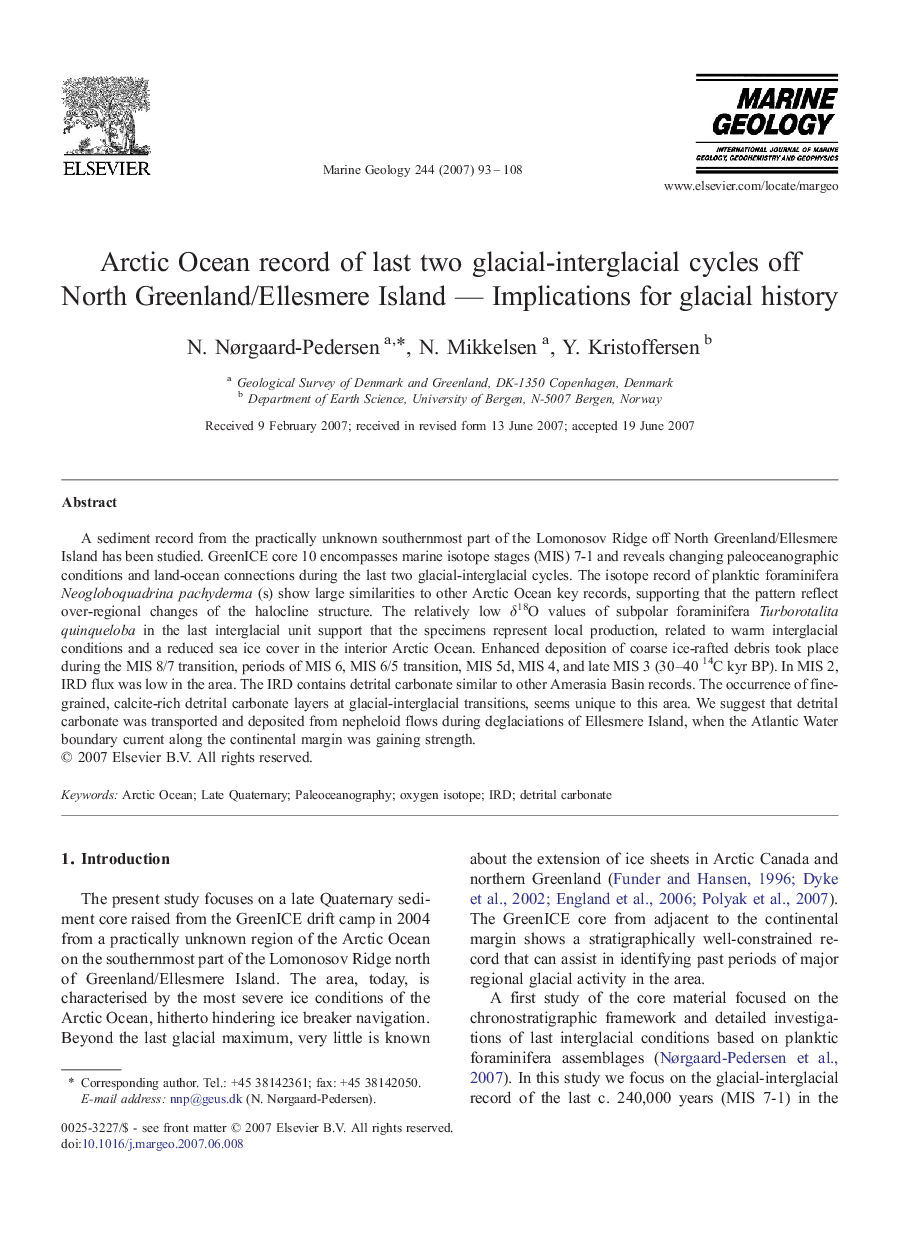| Article ID | Journal | Published Year | Pages | File Type |
|---|---|---|---|---|
| 4719470 | Marine Geology | 2007 | 16 Pages |
Abstract
A sediment record from the practically unknown southernmost part of the Lomonosov Ridge off North Greenland/Ellesmere Island has been studied. GreenICE core 10 encompasses marine isotope stages (MIS) 7-1 and reveals changing paleoceanographic conditions and land-ocean connections during the last two glacial-interglacial cycles. The isotope record of planktic foraminifera Neogloboquadrina pachyderma (s) show large similarities to other Arctic Ocean key records, supporting that the pattern reflect over-regional changes of the halocline structure. The relatively low δ18O values of subpolar foraminifera Turborotalita quinqueloba in the last interglacial unit support that the specimens represent local production, related to warm interglacial conditions and a reduced sea ice cover in the interior Arctic Ocean. Enhanced deposition of coarse ice-rafted debris took place during the MIS 8/7 transition, periods of MIS 6, MIS 6/5 transition, MIS 5d, MIS 4, and late MIS 3 (30-40 14C kyr BP). In MIS 2, IRD flux was low in the area. The IRD contains detrital carbonate similar to other Amerasia Basin records. The occurrence of fine-grained, calcite-rich detrital carbonate layers at glacial-interglacial transitions, seems unique to this area. We suggest that detrital carbonate was transported and deposited from nepheloid flows during deglaciations of Ellesmere Island, when the Atlantic Water boundary current along the continental margin was gaining strength.
Related Topics
Physical Sciences and Engineering
Earth and Planetary Sciences
Geochemistry and Petrology
Authors
N. Nørgaard-Pedersen, N. Mikkelsen, Y. Kristoffersen,
